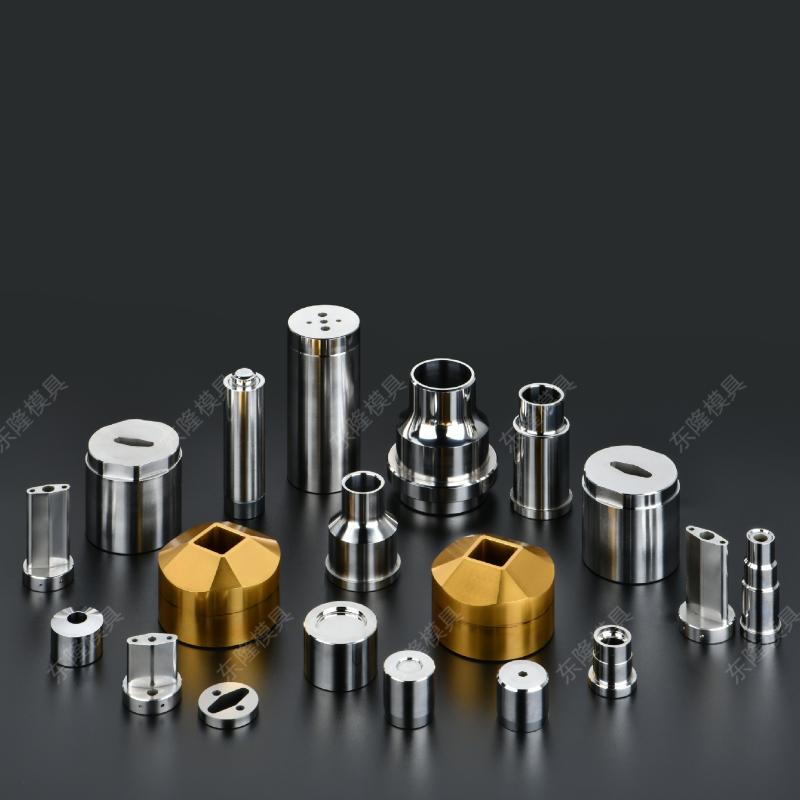Steel Die production is a critical component of many manufacturing processes, especially in industries such as automotive, aerospace, and consumer goods. However, the production of Steel Dies comes with its own set of challenges that can affect efficiency, quality, and cost. This article outlines common challenges faced during the design and manufacturing of Steel Dies, along with potential solutions to overcome them.

1. Material Selection and Quality Control
Challenge: Selecting the right type of steel is crucial for die performance. The choice of material affects durability, wear resistance, and the ability to withstand high pressures during production. Variations in steel quality can lead to premature failure or subpar product quality.
Solution: Conduct thorough material testing and analysis before production. Establish relationships with reputable steel suppliers who provide consistent quality. Implement strict quality control measures, including regular inspections and material certifications, to ensure that the right steel is used.
2. Design Complexity
Challenge: As products become more complex, the design of Steel Dies must evolve to accommodate intricate shapes and features. This complexity can lead to difficulties in manufacturing and increased risk of errors.
Solution: Utilize advanced design software and simulation tools to visualize and analyze die designs before production. Engage in collaborative design processes with engineers and designers to ensure feasibility. Prototyping can also be beneficial, allowing for adjustments before finalizing the design.
3. Precision and Tolerances
Challenge: Maintaining precise tolerances during die manufacturing is essential for ensuring consistent product quality. Variations in precision can lead to defective parts and increased scrap rates.
Solution: Employ high-precision machining techniques and tools to enhance accuracy. Implement strict quality assurance processes that include measuring and testing parts throughout the manufacturing process. Regular calibration of machinery is also necessary to maintain precision.
4. Tool Wear and Maintenance
Challenge: Steel dies are subject to wear and tear over time, which can affect their performance and the quality of the products they produce. Continuous production can exacerbate this issue, leading to downtime for maintenance.
Solution: Implement a proactive maintenance schedule that includes regular inspections and repairs of the dies. Consider using coatings or surface treatments that enhance wear resistance. Establish a monitoring system to track die performance and wear, allowing for timely interventions.
5. Production Lead Times
Challenge: The time required to design, manufacture, and test steel dies can lead to delays in production schedules. This is particularly problematic in industries where time-to-market is critical.
Solution: Streamline the design and manufacturing processes by adopting lean manufacturing principles. Utilize just-in-time (JIT) production techniques to minimize delays. Consider investing in automated manufacturing technologies to expedite production without compromising quality.
6. Cost Management
Challenge: The costs associated with steel die production can be significant, particularly when factoring in materials, labor, and maintenance. Budget overruns can occur due to unexpected challenges.
Solution: Implement cost analysis techniques to identify potential areas for savings during the design and manufacturing phases. Optimize production processes to reduce waste and improve efficiency. Collaborating with suppliers can also lead to bulk purchasing discounts for materials.
7. Environmental Regulations
Challenge: The production of steel dies often involves processes that generate waste and emissions, necessitating compliance with stringent environmental regulations.
Solution: Adopt environmentally friendly practices, such as recycling scrap materials and reducing waste. Stay informed about relevant regulations and invest in technologies that minimize environmental impact. Implement a sustainability strategy that focuses on reducing the overall carbon footprint of die production.
The production of steel dies presents various challenges that can impact efficiency, quality, and costs. By addressing these challenges through proactive solutions, manufacturers can enhance the effectiveness of their die production processes. Embracing innovation, maintaining strict quality controls, and optimizing operations will not only lead to improved die performance but also contribute to the overall success of manufacturing endeavors in a competitive marketplace.











